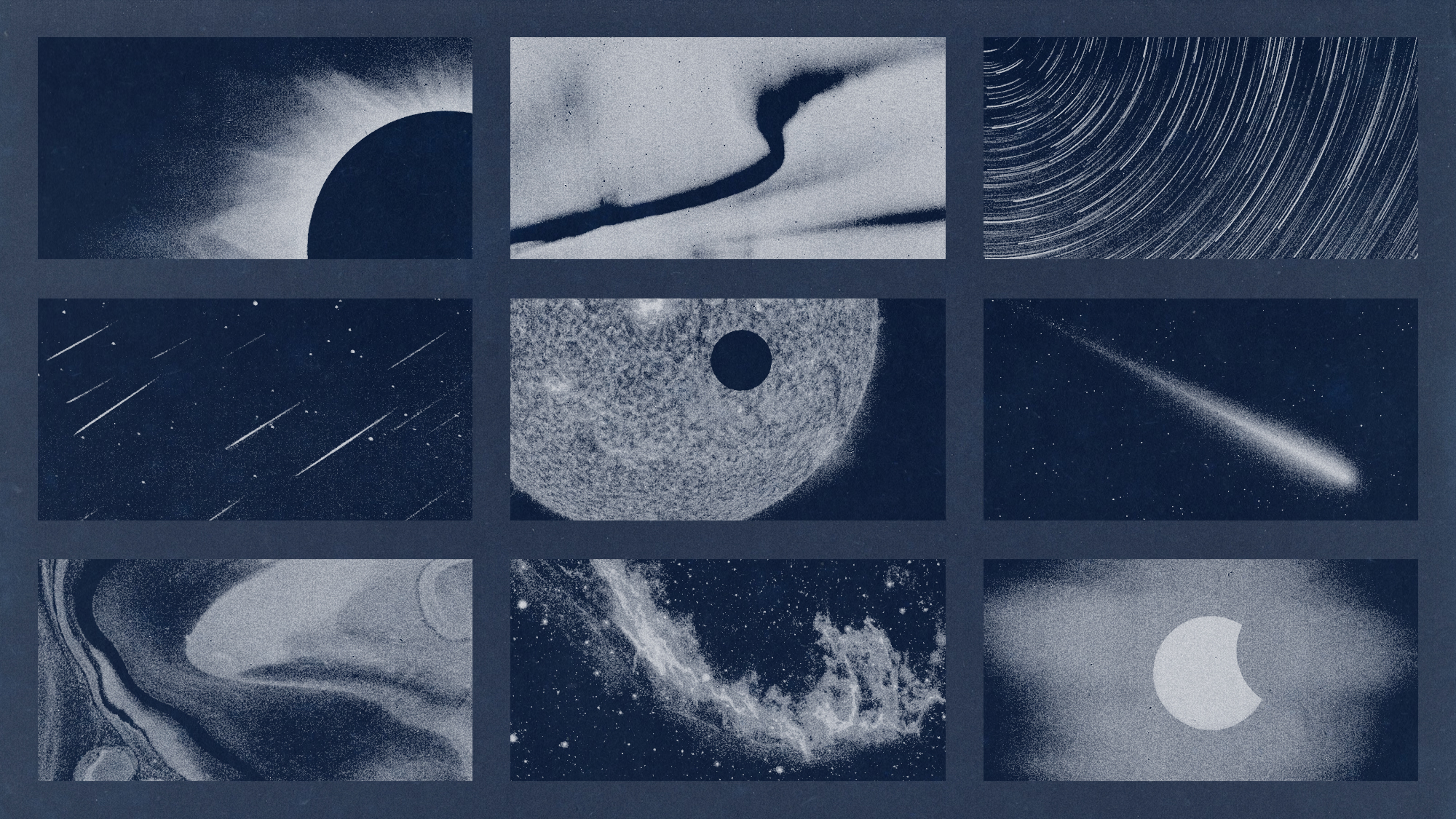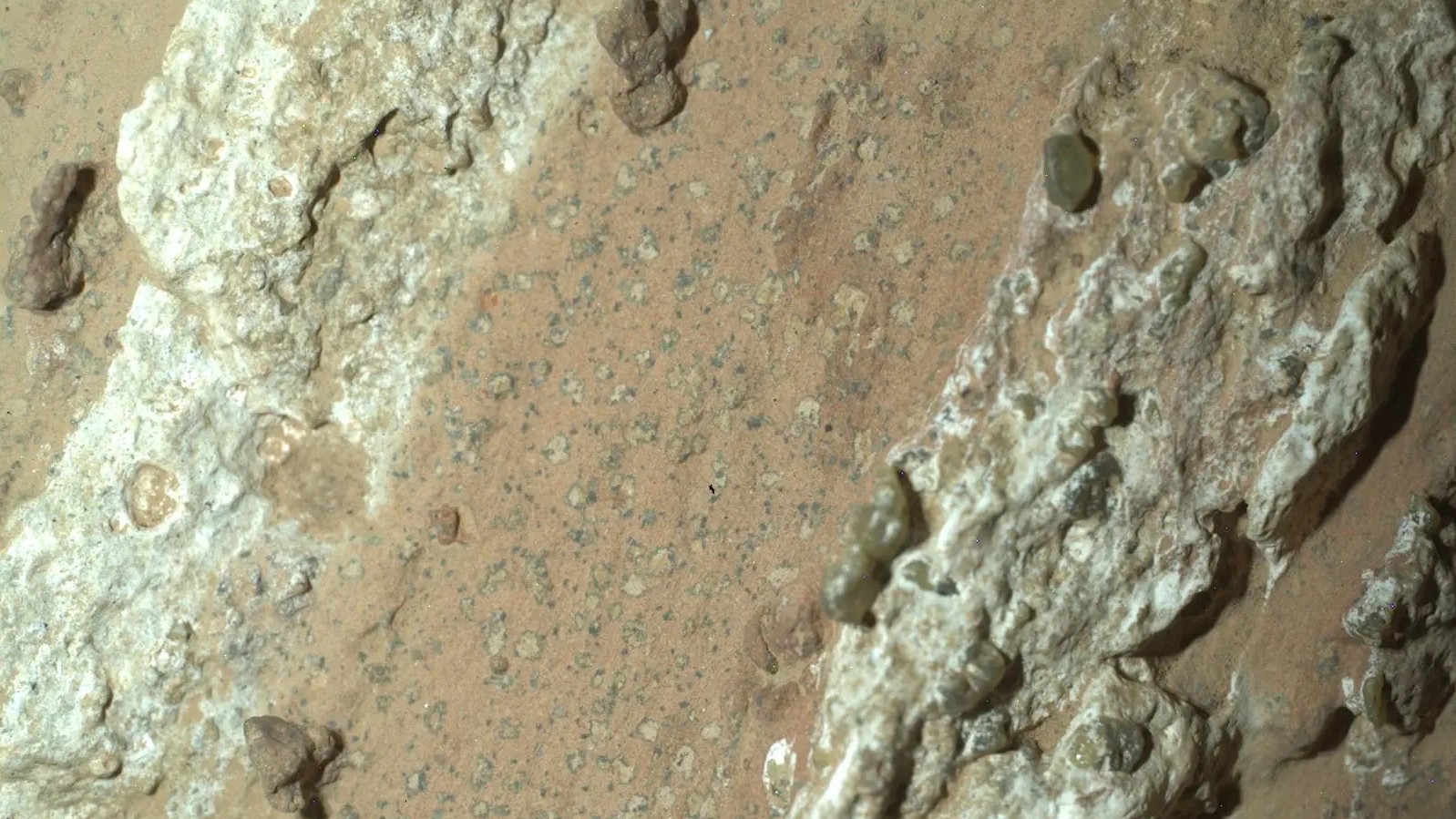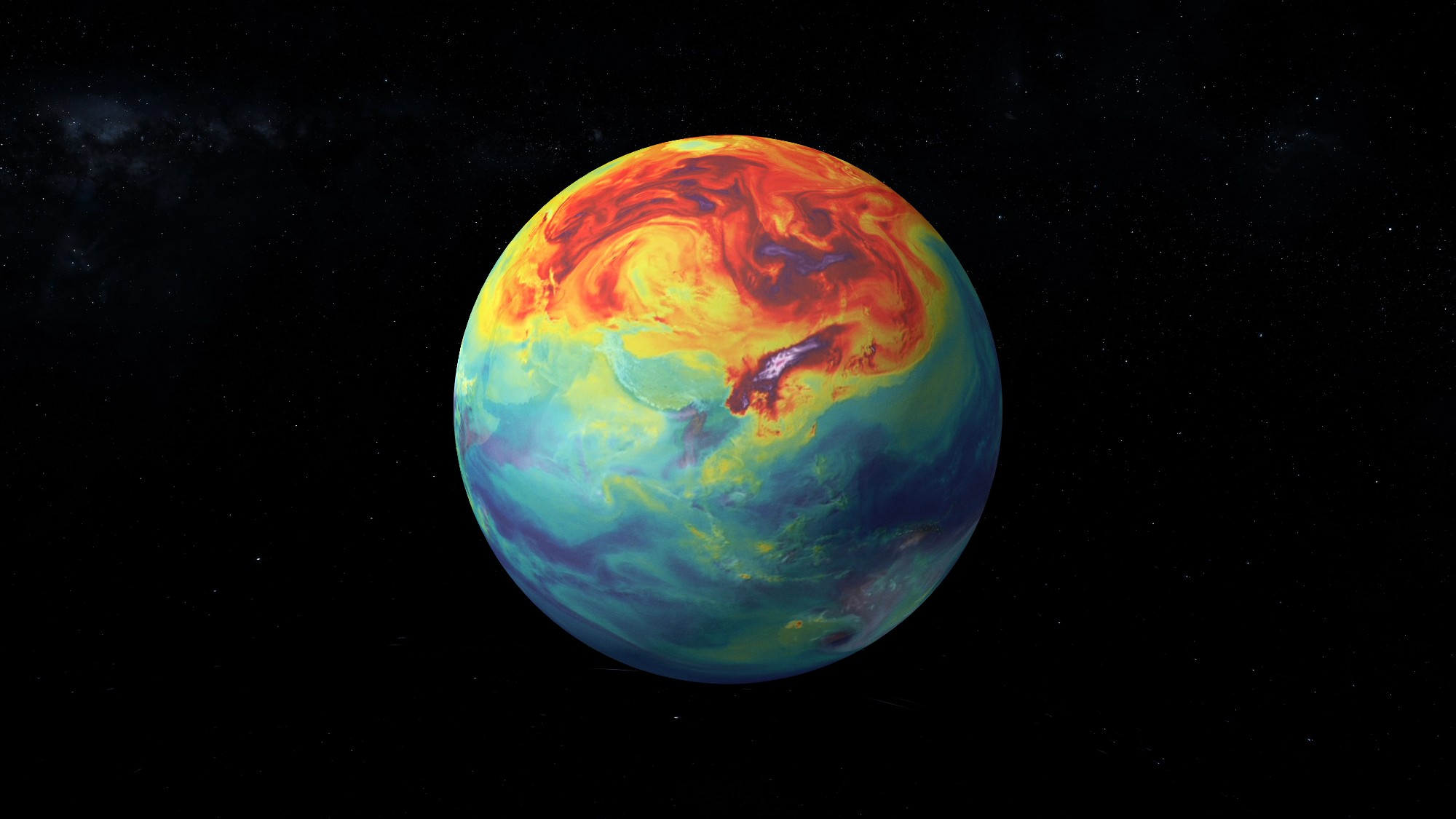Upcoming celestial events to watch
Look to the stars for a change of scenery


The cosmos are a treasure trove of natural phenomena that can be viewed with minimal equipment and a little patience. Throughout the coming year, there will be myriad opportunities to see meteor showers, eclipses and other celestial events. No matter where you live, you can look up and witness something beautiful in the sky. Here is a list of upcoming cosmic phenomena.
Blood moon (March 13 - 14, 2025)
A blood moon or total lunar eclipse will occur in the middle of the night between March 13 and 14. During a total lunar eclipse, the moon "moves into the inner part of Earth's shadow, or the umbra," said NASA. "Some of the sunlight passing through Earth's atmosphere reaches the Moon's surface, lighting it dimly. Colors with shorter wavelengths — the blues and violets ― scatter more easily than colors with longer wavelengths, like red and orange." This makes the moon appear reddish-orange in the sky.
North America, Central America and South America will be able to see the eclipse. Other parts of the world will likely see a partial eclipse. The blood moon is expected to last just over an hour after 2 a.m. on March 14, during which the moon will be at its reddest.
The Week
Escape your echo chamber. Get the facts behind the news, plus analysis from multiple perspectives.

Sign up for The Week's Free Newsletters
From our morning news briefing to a weekly Good News Newsletter, get the best of The Week delivered directly to your inbox.
From our morning news briefing to a weekly Good News Newsletter, get the best of The Week delivered directly to your inbox.
Partial solar eclipse (March 29, 2025)
March also includes a partial solar eclipse where the sun will appear as a crescent while the moon mostly covers it. As a result, there will be "noticeable changes in daylight and temperature," said AZCentral. The event is expected to begin just before 5 a.m. EST on March 29 and peak at approximately 6:47 a.m. In the northern hemisphere, some regions could see a maximum of 92% of the sun eclipsed by the moon, "but nowhere on Earth will see a total solar eclipse," said In-the-sky.org.
The eclipse will "be visible in Europe, northern Asia, northern and western Africa, much of North America and northern parts of South America," said AZCentral. Viewing the eclipse directly is dangerous and eclipse glasses are required.
Lyrid meteor shower (April 15 - April 29, 2025)
The Lyrid meteor shower will take place in the middle of April and peak on the dawn of April 22. The meteors in the shower originate from the comet Thatcher. At its peak, there will likely be 10 to 15 Lyrids per hour, however, "the Lyrids are known for uncommon surges that can sometimes bring rates of up to 100 per hour," said EarthSky.
How well the meteors can be seen depends upon a number of factors, "from the time of night to the level of background light," said Royal Museums Greenwich. "A bright sky will drown out the fainter meteors making them much more difficult to see." It's best to view these from a dark location early in the morning on the day of the peak.
A free daily email with the biggest news stories of the day – and the best features from TheWeek.com
Eta Aquarid meteor shower (April 20 - May 21, 2025)
Overlapping with the Lyrid shower, the Eta Aquarids will begin toward the end of April and peak on the dawn of May 5. The Eta Aquarids originate from the famous Halley's comet. At its peak, "in the southern half of the U.S., you might see 10 to 20 meteors per hour under a dark sky, with no moon," said EarthSky. "Farther south — at latitudes in the Southern Hemisphere — you might see two to three times that number."
The Eta Aquarids are visible to the naked eye and do not require a telescope. For the best viewing, visit a location free from street lights and light pollution and allow your eyes to adjust to the darkness.
June solstice (June 21, 2025)
June solstice, or summer solstice in the northern hemisphere, is the day when the sun hits the northernmost point on Earth's orbit. This makes it the longest day in the northern hemisphere and the shortest day in the southern hemisphere. "This effect is greatest in locations that are farther away from the equator," said Time and Date. "In tropical areas, the longest day is just a little longer than 12 hours; in the temperate zone, it is significantly longer; and places within the Arctic Circle experience Midnight Sun or polar day, when the Sun does not set at night." The reverse is true in the south, with the Antarctic circle experiencing a polar night.
Perseid meteor shower (July 17 - Aug. 23, 2025)
The Perseid meteor shower will occur throughout the summer and peak around Aug. 12. At its peak, you may see an average of 100 meteors per hour. The Perseids are considered the best meteor shower of the year. "With swift and bright meteors, Perseids frequently leave long 'wakes' of light and color behind them as they streak through Earth's atmosphere," said NASA.
The large parent comet for the shower is called 109P/Swift-Tuttle. The Perseids are "best viewed in the Northern Hemisphere during the pre-dawn hours, though at times it is possible to view meteors from this shower as early as 10 p.m.," said NASA.
Total lunar eclipse (Sept. 7, 2025)
A total lunar eclipse happens when the Earth is between the sun and a full moon in space, making the moon appear red. One will be visible in September from western Australia, Asia and Europe. "When 100% of the lunar surface is draped in orange-red light, the all-important totality will last 82 minutes, making it a very long-duration total lunar eclipse," said Space.com. "This total lunar eclipse will occur 2.7 days before the moon reaches perigee — its closest point to Earth on its slightly elliptical orbit — making it slightly larger than average."
Partial solar eclipse (Sept. 21, 2025)
September 2025 is a big month for eclipses, with a partial solar eclipse expected just two weeks after the lunar eclipse. However, this eclipse will likely not be viewed by many, because "the point of greatest eclipse — where 80% of the sun will be blocked by the moon — will occur in a remote part of the far South Pacific Ocean, south of New Zealand and close to Antarctica," said Space.com.
Some parts of New Zealand will be able to view it during sunrise, "making for dramatic views as a crescent sun appears on the horizon," the outlet added. "It will be possible to observe a 58% to 73% eclipse, depending on the exact location." Solar eclipses are not safe to view directly and eye protection is required.
Devika Rao has worked as a staff writer at The Week since 2022, covering science, the environment, climate and business. She previously worked as a policy associate for a nonprofit organization advocating for environmental action from a business perspective.
-
 Bridget Riley: Learning to See – an ‘invigorating and magical ensemble’
Bridget Riley: Learning to See – an ‘invigorating and magical ensemble’The Week Recommends The English artist’s striking paintings turn ‘concentration into reverie’
-
 ‘Stakeknife’: MI5’s man inside the IRA
‘Stakeknife’: MI5’s man inside the IRAThe Explainer Freddie Scappaticci, implicated in 14 murders and 15 abductions during the Troubles, ‘probably cost more lives than he saved’, investigation claims
-
 The UK’s best Christmas pantos
The UK’s best Christmas pantosThe Week Recommends Dive into the festive cheer, even into the new year, with some traditional favourites and modern twists
-
 Blue Origin launches Mars probes in NASA debut
Blue Origin launches Mars probes in NASA debutSpeed Read The New Glenn rocket is carrying small twin spacecraft toward Mars as part of NASA’s Escapade mission
-
 ‘The Big Crunch’: why science is divided over the future of the universe
‘The Big Crunch’: why science is divided over the future of the universeThe Explainer New study upends the prevailing theory about dark matter and says it is weakening
-
 Dinosaurs were thriving before asteroid, study finds
Dinosaurs were thriving before asteroid, study findsSpeed Read The dinosaurs would not have gone extinct if not for the asteroid
-
 The moon is rusting
The moon is rustingUnder the radar The Earth is likely to blame
-
 Panspermia: the theory that life was sent to Earth by aliens
Panspermia: the theory that life was sent to Earth by aliensUnder The Radar New findings have resurfaced an old, controversial idea
-
 Africa could become the next frontier for space programs
Africa could become the next frontier for space programsThe Explainer China and the US are both working on space applications for Africa
-
 NASA reveals ‘clearest sign of life’ on Mars yet
NASA reveals ‘clearest sign of life’ on Mars yetSpeed Read The evidence came in the form of a rock sample collected on the planet
-
 NASA is moving away from tracking climate change
NASA is moving away from tracking climate changeThe Explainer Climate missions could be going dark
